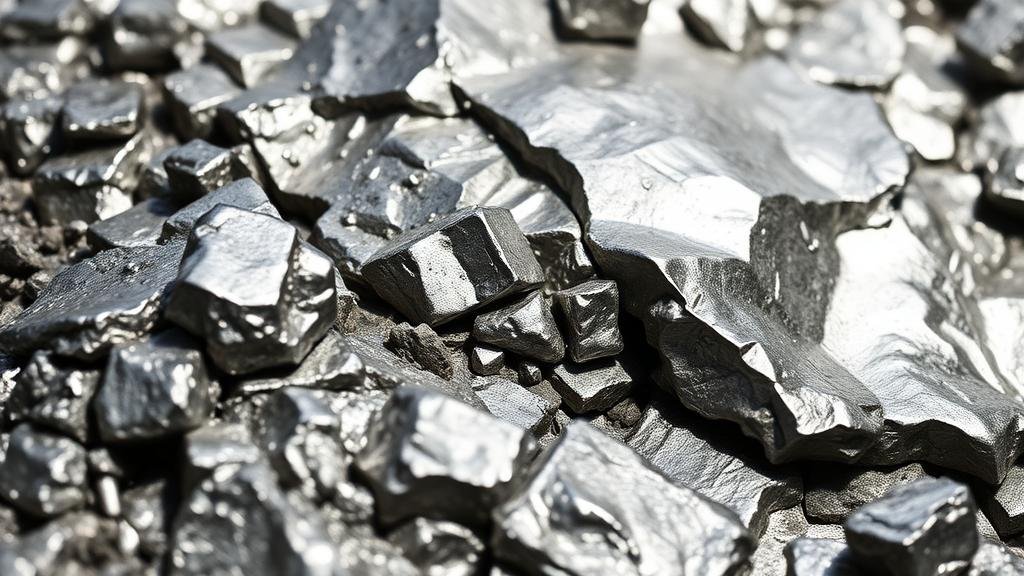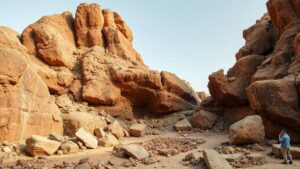Recovering Silver From Epithermal Systems in Dry Regions
Recovering Silver From Epithermal Systems in Dry Regions
Silver recovery from epithermal systems, particularly in dry regions, is a fascinating area of study that combines geology, metallurgy, and environmental management. This article aims to provide a comprehensive overview of the processes involved, the challenges faced, and the strategies employed in efficient silver recovery.
Understanding Epithermal Systems
Epithermal systems are geological formations where mineral deposits, specifically precious metals like silver and gold, are formed at shallow depths due to hydrothermal activity. These systems typically exhibit lower temperature and pressure conditions compared to mesothermal or porphyry deposits.
In dry regions, these deposits often emerge due to the unique geological processes influenced by arid climates. As water evaporates, it can lead to the concentration of minerals, making these areas rich in valuable metals.
Geological Characteristics of Dry Regions
Dry regions often possess distinct geological characteristics that impact silver recovery:
- Desert Pavement: A surface layer composed of tightly packed stones, which can indicate the presence of underlying mineral deposits.
- Alluvial Fans: These formations can lead to the collection of silver deposits washed down from higher elevations.
- Volcanic Activity: Many epithermal systems are associated with past volcanic events that contribute heat and fluids necessary for mineralization.
Extraction Techniques
The extraction of silver from epithermal systems typically involves several key techniques, each adaptation molded by the unique conditions of dry environments:
- Cyanide Leaching: This method uses a dilute cyanide solution to leach silver from ore, making it one of the most effective processes for recovery.
- Flotation: Utilizing surfactants, this process separates silver from other minerals based on differences in hydrophobicity.
- Gravity Separation: This technique exploits the density differences in minerals, often used in conjunction with other methods, especially for alluvial deposits.
Challenges in Dry Regions
While epithermal systems in dry regions present opportunities for silver recovery, several challenges must be addressed:
Water Scarcity
Water availability is a critical concern in arid regions. Since many recovery methods, such as cyanide leaching, require water, mining operations must implement sustainable water management practices. For example, some companies recycle water from mining processes or use alternative leaching agents to reduce dependency on fresh water.
Environmental Impact
The potential environmental impact of mining operations can be significant, particularly on fragile ecosystems found in dry regions. Ensuring responsible mining practices, such as maintaining strict waste management protocols and minimizing land disturbance, is essential. Regulations and industry standards are in place in various countries to enforce these practices.
Economic Viability
The economic feasibility of silver extraction from epithermal deposits in dry regions can be influenced by several factors including market prices, operational costs, and technological advancements. As of October 2023, silver prices have shown volatility, making it crucial for companies to conduct thorough economic analyses and cost-benefit assessments before commencing operations.
Case Studies
Several successful case studies illustrate effective silver recovery from epithermal systems in dry regions:
- La Colorada Mine (Mexico): This project employs cyanide and flotation techniques to recover silver from an epithermal deposit, showcasing effective water management strategies.
- Rochester Mine (Nevada, USA): Utilizing heap leaching strategies, this mine capitalizes on low-silver grade ores, demonstrating the economic potential of large-scale operations in arid environments.
Actionable Takeaways
For those interested in the silver recovery landscape from epithermal systems in dry regions, consider the following takeaways:
- Stay informed about advancements in extraction technologies that enhance efficiency and reduce environmental impact.
- Use comprehensive water management strategies to ensure sustainable operations in arid environments.
- Conduct regular economic feasibility assessments to adapt to market fluctuations and operational costs.
By understanding the geology, extraction techniques, and challenges associated with these unique mineral systems, stakeholders can make informed decisions and foster sustainable practices in silver recovery.



